While painting, I travel within my mind and create my own land-
scapes – my own Hampi, my own cities, as I visualise it.”
ONE INDIA ONE PEOPLE | JAN | 2023 27 Gurudas Shenoy with Gurudas ShenoyFACE TO FACE His abstract paintings in oil on Hampi, Badami and Varanasi have wowed art lovers since decades. The bold brush strokes, subtle interplay of muted tones alongside vibrant hues, tilting boats and coracles placed in an unconventional manner, temples perched on uneven rocks – all make for a striking canvas that transports viewers to the place of the artist`s imagination inviting them to explore more of his journey. His charcoal sketches are equally captivating.
‘Urban Stories’ is a new series from the riveting palette of acclaimed Bengaluru-based artist Gurudas Shenoy, who was in Mumbai in Decem- ber to exhibit his work at the Jehangir Art Gallery. The series are his “travel” stories on canvas that happened during the recent pandemic when he was confined to his home and studio. It is interest- ing to see how the artist has been able to capture still life, urbanscape and even Hampi in the same frame.
Shenoy has held around 14 solo shows in India and abroad and his works are proud possessions of private and corporate enthties, and a few insti- tutions. While attending to fellow artists and guests who have come to view his exhibition, and fielding question from art students and aspiring artists, he takes a breather to chat with Anuradha Dhareshwar about his art journey.
Can you give us a brief background of yourself?
I grew up in Udupi, a small coastal city in Karnataka, surrounded by the beautiful Arabian Sea on one side and the verdant Western Ghats on the other. I soaked in the beauty of the rural landscape, the greenery, floating clouds that formed different patterns, the rains lashing the countryside, the colourful fishing boats sailing in the sea that kept changing colours at different times of the day, the temple architecture, etc. Basically, it is nature that inspired me as a young boy and I would walk around with a sketch book trying to capture the various moods of nature. That was the beginning of my artistic journey.
Initial training in art happened at Kalabharti, the art school run by my father Gokuldas Shenoy, under the aegis of South Kanara Art Council (SKAC). My dad was an alumnus of the J. J.School of Art, Mumbai. The Council organised Art Camps, Art Festivals and various other art activities regularly, which used be attended by talented artists and writers of the time. There used to be talks by the visiting artists, writers, group discussions, slide shows, etc., all of which I was exposed to from an early age and laid a solid foundation for my future. The rich knowledge that I gathered from these art activities was impactful.
For formal education in art, I studied at the Faculty of Fine Arts, M.S. University, Baroda (now Vadodara), which again was a great institution which had the finest faculty where I could hone my skills further. Besides painting in different media, I got to learn other forms of art including sculpture.
Your dad was an accomplished artist. How much has your art been influenced by his work?
I was extremely fortunate to have a friend and mentor at home. I grew up observing my father at work and learned a lot not just about painting skills, but more importantly finer aspects of life, discipline, organisational skills and work ethics, among other things. My dad was a man of many talents. He was a prolific artist, a great sports person in his college days, enjoyed singing, but above all a fine human being…a caring person who had a large circle of friends – artists, singers, writers among others. He had innate leadership qualities and was a pioneer in art education and early artistic movements in Karnataka. So his influence on me first as a father and an artist was immense.
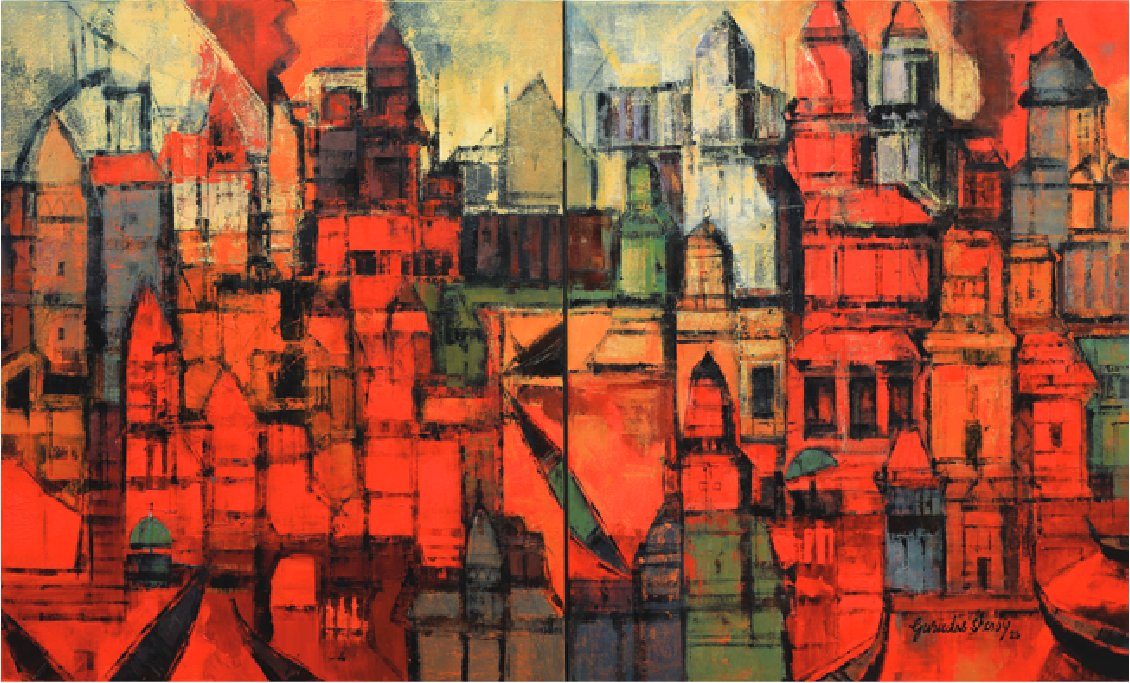
Tell us about your art journey. How did you get into abstract painting?
I always wanted to be a painter. After graduating in Fine Arts, I came home to Bangalore where my dad had relocated from Udupi. I used to observe him working on murals and also helped him initially in his studio. I was fascinated by that medium and loved experimenting with different types of materials. I worked with clay, glass, fibre glass, terracotta, wood, metal, granite, chalk, softpas- tels, charcoal…You name it and I have worked with almost every material. But murals demanded a lot of time and I wasn’t getting enough time to paint, which was my passion. Initially, I divided my time between the two but at some point I had to make the switch. Painting abstracts happened organically as I believe everything in this Universe is formless. Whether I painted in watercolours, oils, pastels… any medium, there was always abstraction in my work. So it was not as if I got up one day and decided I will paint abstracts.
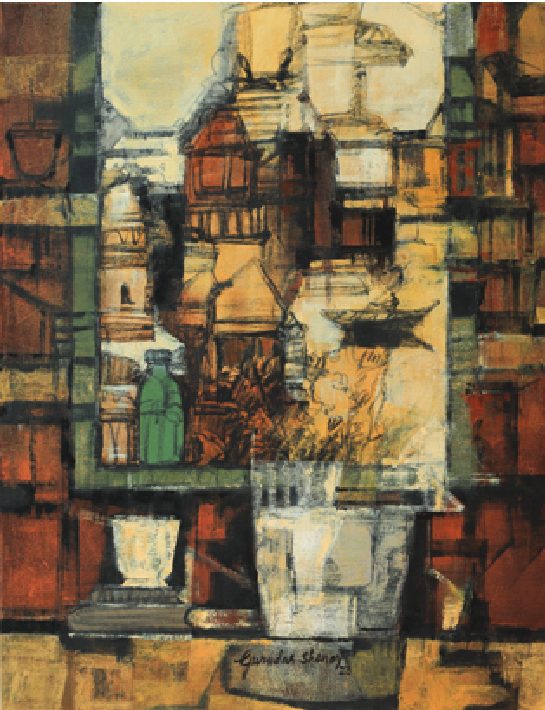
How and where does the creative process begin?
A lot of inspiration for my work comes from travel. My travels abroad, especially to Europe opened up my mind and I saw art differently. I did not travel like a regular tourist. I loved exploring offbeat places; observe the local people, their life and culture. All that I had studied as a student of art is something that I got to see and experience during these visits. I would come home to India with memories and ideas that were flooding in my mind, waiting to be expressed on the canvas. I did not want to reproduce what I saw but it had to be my interpretation of the place. So that is what you get to see in all my paintings…my interpretation of a place.
Hampi and Varanasi are you favourite themes
I love travelling and in India too my work is influenced by places I have visited, whether it is Hampi, Badami, Varanasi or any other place. India has so much to offer. As a child, I grew up listening to stories from our epics and historical events narrated by a grand aunt who was a wonderful story teller. It was fascinating to know the story of Kishkinda in Hampi, stories of Vijayanangar Dynasty and their contribution to art and architecture, etc. As an artist, I spent a lot of time marveling at the rocks in Hampi, climbing the hills, soaking in the view from the top of the mountains with the Tungabhadra River flowing down. Just spending time in the midst of nature, studying the shapes, the effect of light on the rocks, making small sketches, and then going home and expressing them on my canvas was a process that I enjoyed. And still do. However, while painting, I travel within my mind and create my own landscapes – my own Hampi, my own cities, as I visualise it.
How do you decide on colours?
Do you paint only on a large canvas? Colour and composition are two very important elements of a painting. Colours are my forte and I mix them to create my own palette that reflects the mood of that place. Sometime, red dominates, sometimes yellow, sometimes green…so on and so forth. Even when I use red in my canvas, I take care to see it does not shout out. The bright colours merge with muted tones in a way to create a well-balanced canvas.
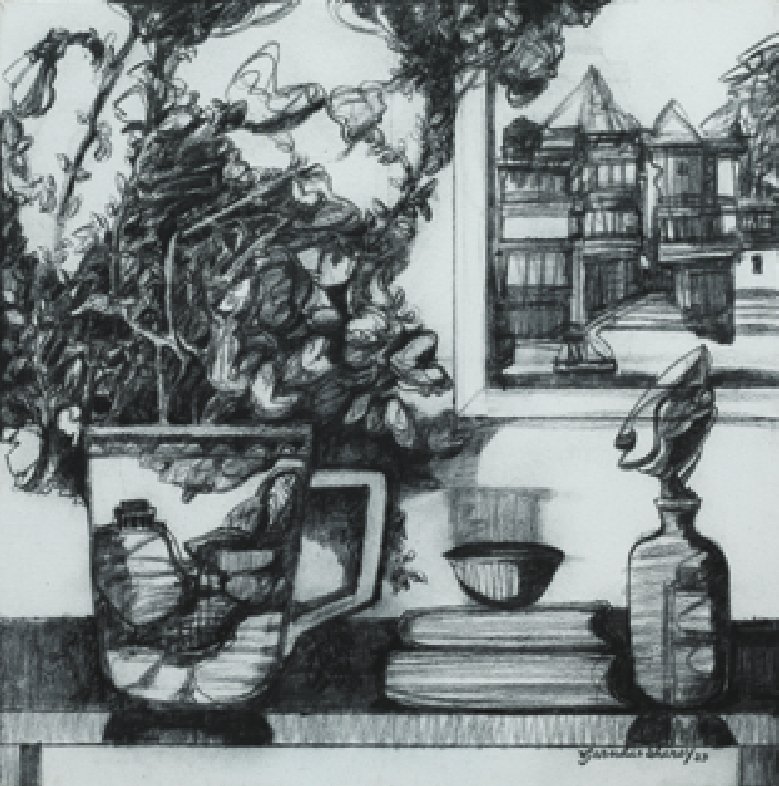
I enjoy painting on a large canvas that gives me the creative freedom to travel to these places as I paint. It is not as if I don’t paint on a smaller canvas, but I find painting on a bigger canvas more liberating. My hands move freely along with my thoughts, the strokes are bolder and I don’t feel confined to a limited space
I can see a few paintings here where still life such as flower vases and bowls are juxtaposed with cityscape. Can you explain this?
These paintings are a part of my new series called ‘Urban Stories’ triggered by my emotions and experiences during Covid when we were confined to our homes. Due to travel restrictions, all my time was spent in my studio arranging and rearranging things within the four walls and that included tea cups and flower vases at the window. There wasn’t much happening outside on the streets and I began imagining cities and life outside my window which result- ed in these paintings.
You have been a part of the art scene in India for over four decades. What are the significant changes you have noticed in recent times? How is social media influencing art?
There are significant changes happening in the world of art. There is more awareness about art and artists. There are so many artfairs, art camps, art biennale, workshops happening in India and abroad. Lay people are taking a lot of interest in art, visiting exhibitions, appreciating art. There is phenomenal talent in all kinds of art and not just painting. The young and experienced, both are producing brilliant work and social media is playing a major role in reaching their work to a wider audience globally. It is a wonderful platform if used properly. The artist community is growing by the day. I see exciting times ahead for art and artists.
The online galleries are the new trend and helping artists to exhibit their work. Social media is playing an important role in giving exposure to art. Artists and their work are getting noticed world-wide at the click of a button. The role of physical galleries is equally important and India needs to have more galleries in every small town and big cities for people to appreciate art. Art needs to be given due importance in schools and should be a part of our academic curriculum. Students should be taken to art galleries to appreciate art and also be encouraged to take it up as career.
Can you tell us a little about Shenoy Art Foundation and its work?
It is a small initiative by me and my wife Amita to promote, encourage and support visual artists. It was founded as a tribute to my father who was also a philanthropist at heart and helped fellow artists in whatever ways he could. The Foundation show- cases the works of emerging artists in Karnataka by giving them annual grants in recognition of their work. We observe their journey and reward those who are consistently creative.

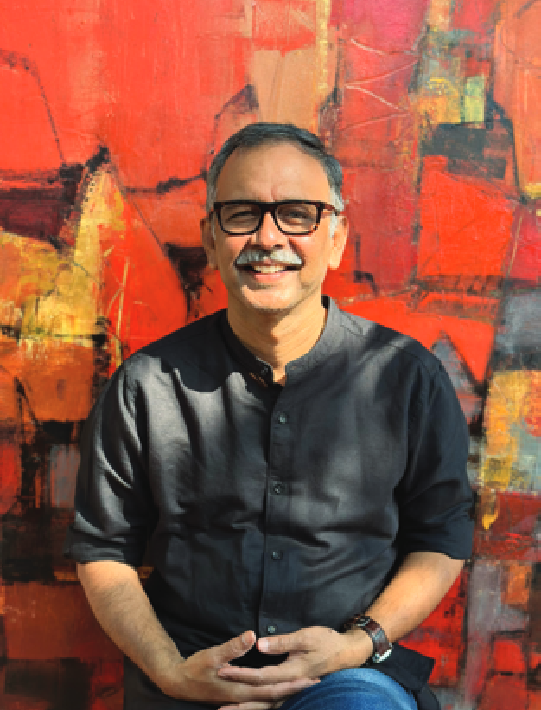
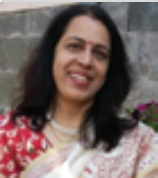 Anuradha Dhareshwar is Editor, One India One People. She is also an artist and former journalist.
Anuradha Dhareshwar is Editor, One India One People. She is also an artist and former journalist.